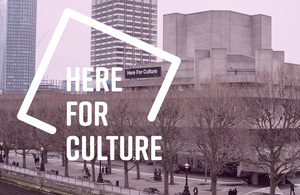 An ambitious new programme of research to improve decision making by valuing the benefits of our culture and heritage capital to society has been announced by Department for Digital, Culture, Media & Sport (DCMS).
An ambitious new programme of research to improve decision making by valuing the benefits of our culture and heritage capital to society has been announced by Department for Digital, Culture, Media & Sport (DCMS).
image: for illustration purposes only – Open Government Licence v3.0
… heritage sectors better demonstrate their value…
.. new approach…. will help the sector make a stronger case for public and private investment in culture and heritage assets…
DCMS writes:
- Government has today published world-leading research to help the culture and heritage sectors better demonstrate their value to society
- The new approach, set out within the framework, will help the sector make a stronger case for public and private investment in culture and heritage assets
- Research by Arts Council England shows that people value each visit to a regional gallery at around £5
…. the Department for Digital, Culture, Media and Sport (DCMS) has launched an ambitious new programme of research to improve decision making by valuing the benefits of our culture and heritage capital to society.
People consume culture and heritage in many different ways, from admiring a piece of modern art, learning about an area’s history from a visit to a local museum, or taking in the view of a castle on a countryside walk.
Access to culture and heritage has many benefits, such as improving our wellbeing, providing education, and contributing to local identity. However, currently there is no agreed approach to measuring this contribution which means that the value of culture and heritage capital is often understated.
The report “Valuing Culture and Heritage Capital: A Framework Towards Informing Decision Making” published by DCMS sets out how our approach will support the evidence base behind private and public investments in culture and heritage. This is consistent with Social Cost Benefit Analysis principles published in HM Treasury’s Green Book. While economic methodologies will take centre stage, a cross-disciplinary approach is needed. The programme will develop a robust evidence base for organisations in the culture and heritage sectors to use when making decisions regarding public and private investment.
Culture Minister Caroline Dinenage said:
“There is no doubt about the vast contribution culture and heritage make in all our lives: whether enjoying public artwork at a local gallery, visiting the library or enjoying the grounds of a historic house. I am pleased that this new research will help us to better quantify the value and benefit that these important local institutions bring and will help us to protect them for future generations.”
Commissioner for Cultural Recovery and Renewal Lord Mendoza said:
“Our culture and heritage give us joy and make a huge contribution to society. We need to make sustainable, evidence based decisions so we can preserve cultural venues and sites while enabling people to enjoy them. These new economic tools will make an important contribution to how we measure the value of culture and heritage.”
Also published today are new studies from DCMS and its Arm’s Length Bodies, developed by Simetrica-Jacobs and Nesta. This research has helped inform the DCMS framework and programme of research with figures showing how much visitors value their engagement with culture and heritage.
- Arts Council England has shown that people value a visit to a regional gallery at an average of over £5
- Historic England has shown that households on average value the historic character of their local high street at around £7.80 per year
- British Film Institute have shown that users of its free ‘Britain on Film’ portal, which provides stories of UK life through the history of film, value access to the service at over £3 a month
- DCMS’s Rapid Evidence Review provides an assessment of the current state of the literature valuing the services provided by culture and heritage assets
Darren Henley, Chief Executive Arts Council England said:
“I’m lucky enough to see for myself every day how public investment in culture changes people’s lives for the better. It’s important that we gather the data to show how, why and where this happens. Today’s new publications will help museums, libraries and performance venues demonstrate their impact in villages, towns and cities across the country. We’ll be working with our cultural organisations to use these tools as they continue to play their part in helping the nation recover from the pandemic.”
Sir Laurie Magnus, Chairman of Historic England said:
“Developing this framework, long championed by Historic England, is an essential step in establishing a universally recognised standard for measuring the social and economic values of our extensive and dynamic cultural heritage. Through ensuring a consistent approach across the cultural and heritage sectors, it will provide an authoritative basis for demonstrating public benefit and impact, as the Natural Capital framework has established for the environment sector.”….
These include:
Department for Digital, Culture, Media and Sport
- Valuing Culture and Heritage Capital: A framework towards decision making
- DCMS Rapid Evidence Assessment: Culture and Heritage Valuation Studies
- Guidance Note: How to estimate the public benefit of your Museum using the Economic Values Database
- Arts Council England: Regional Galleries and Theatres Benefit Transfer Report
- Measuring the Economic Value of Culture Research Project: Summary of interviews with sector participants on valuation
- Heritage and the value of place
- The value of digital archive film history: Britain on Film case study

